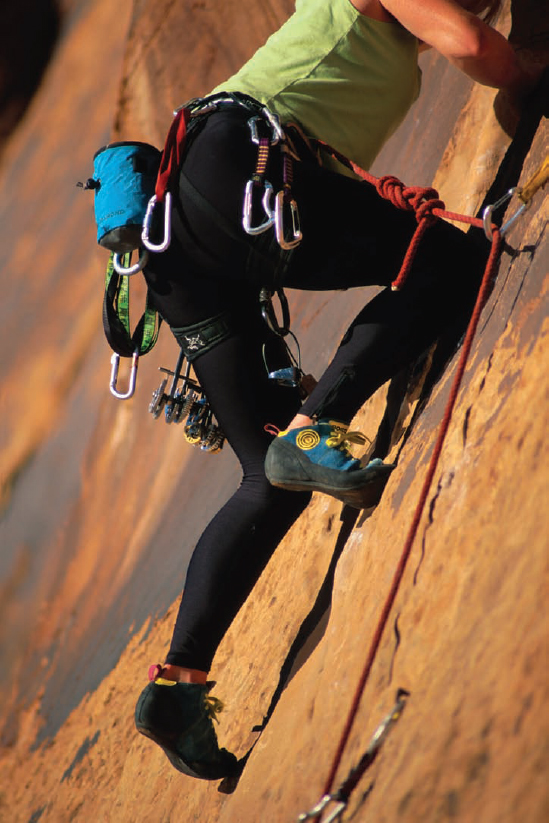

In rock climbing, a leader (higher climber) is secured by rope to a second climber who is anchored to the rock wall. The rope passes through one or more runners (metal loops) that the leader has driven into the wall along the climbing route. The advantage of using runners is that the leader can fall only a certain distance below the highest runner. A subtle danger, however, is that the rope may snap as it is stretched during the fall. Many novice rock climbers reason that this danger depends on the leader’s height above the last runner just before the fall: the greater this height, the greater the stretch and thus the greater the danger of snapping the rope.
Why is that reasoning wrong?
The answer is in this chapter.
8-1 What Is Physics?
One job of physics is to identify the different types of energy in the world, especially those that are of common importance. One general type of energy is potential energy U. Technically, potential energy is energy that can be associated with the configuration (arrangement) of a system of objects that exert forces on one another.
This is a pretty formal definition of something that is actually familiar to you. An example might help better than the definition: A bungee-cord jumper plunges from a staging platform (Fig. 8-1). The system of objects ...
Get Fundamentals of Physics now with the O’Reilly learning platform.
O’Reilly members experience books, live events, courses curated by job role, and more from O’Reilly and nearly 200 top publishers.

